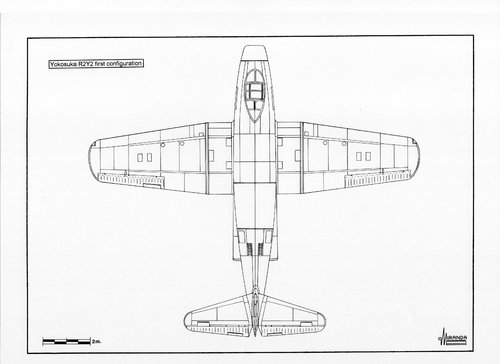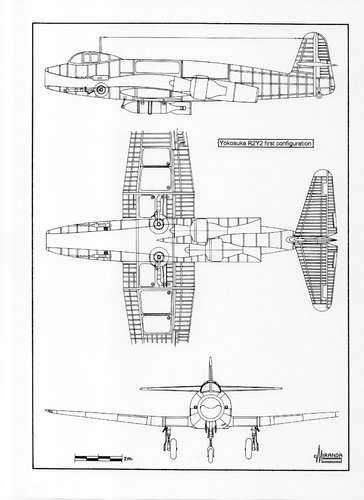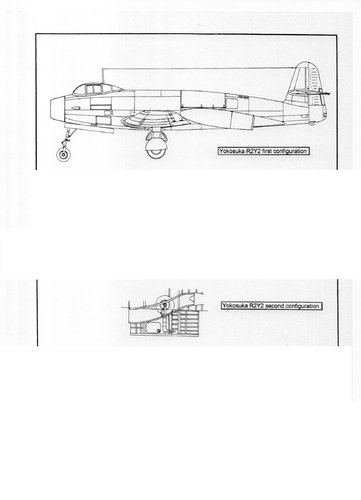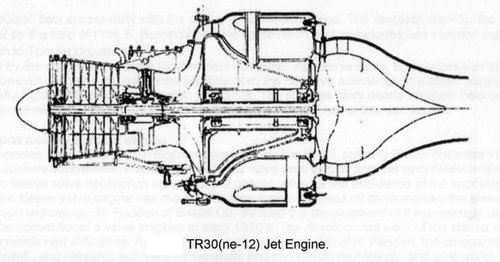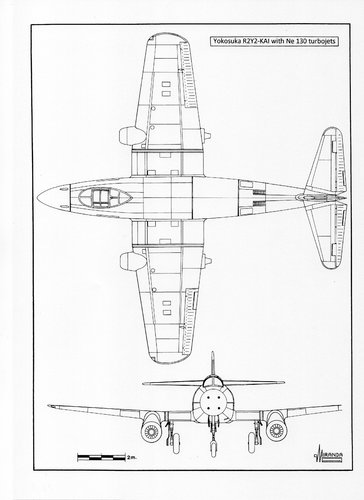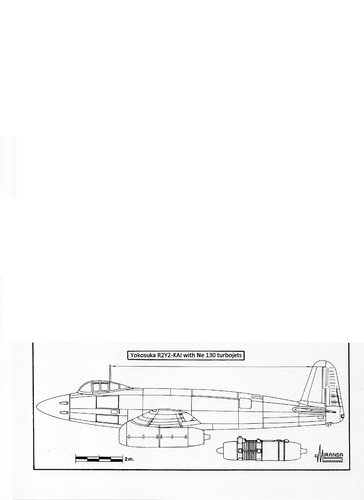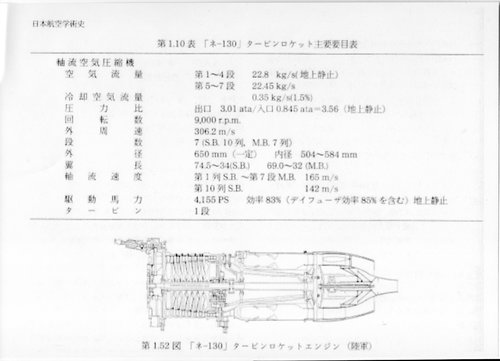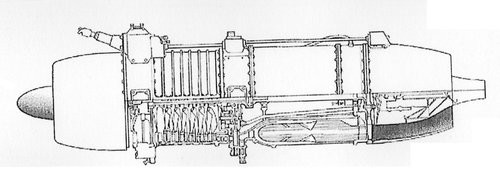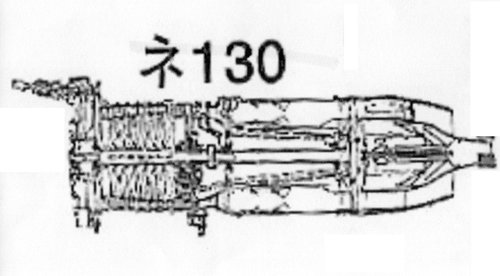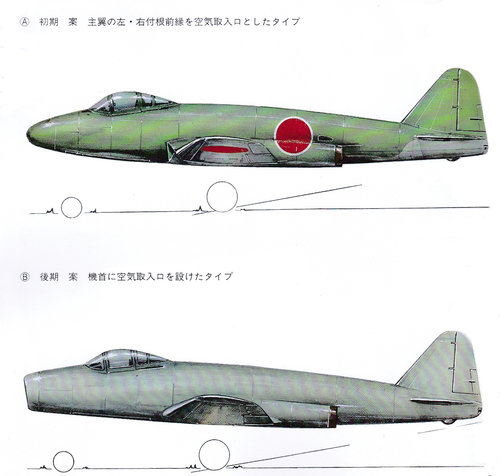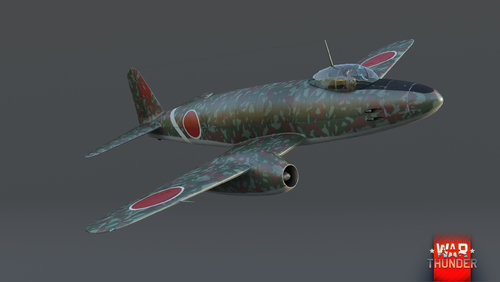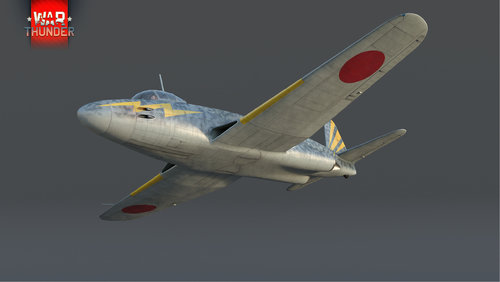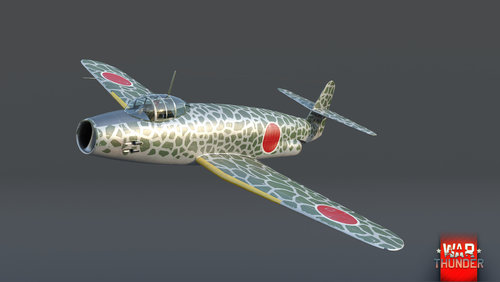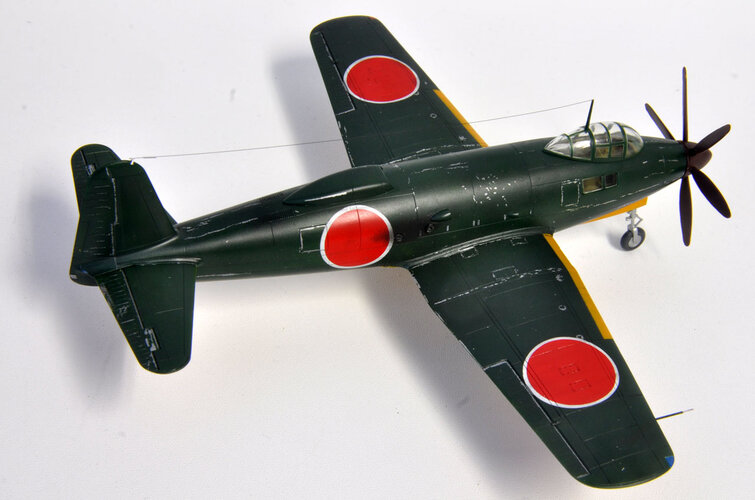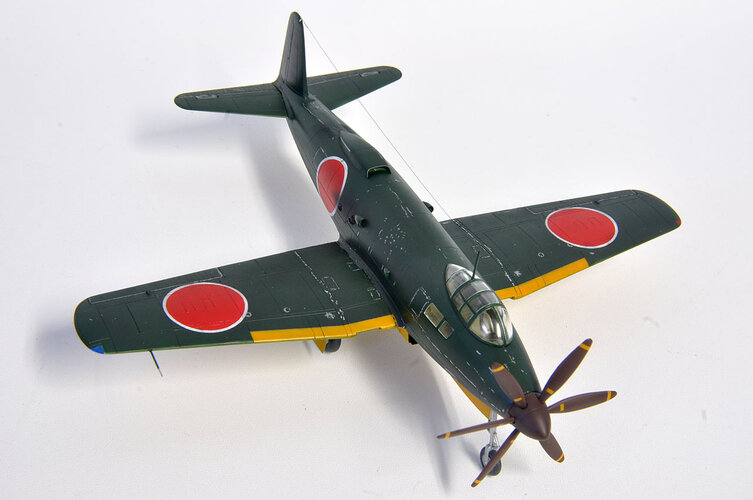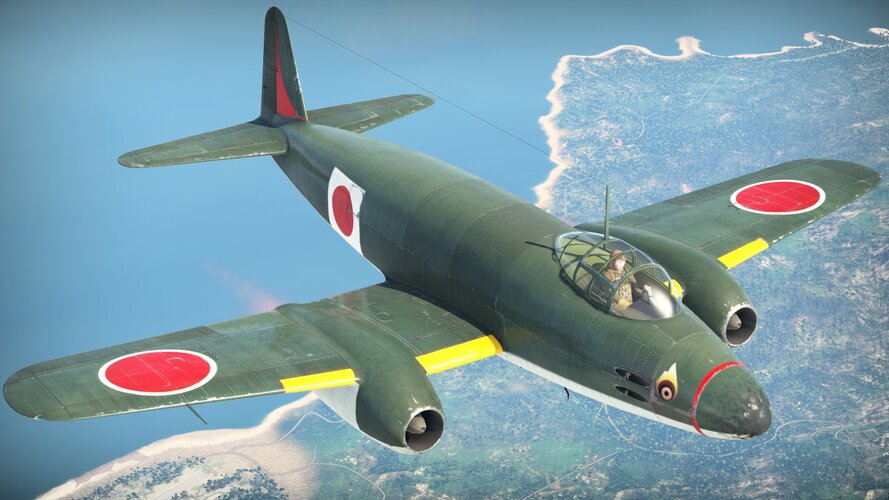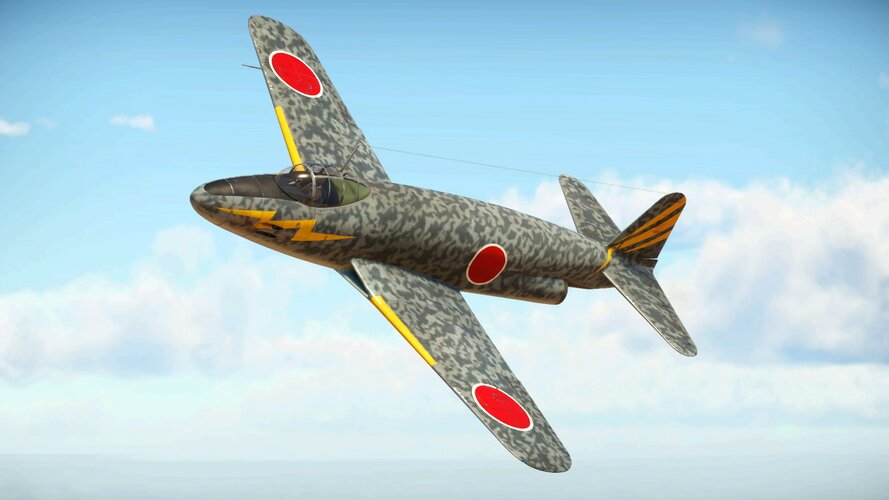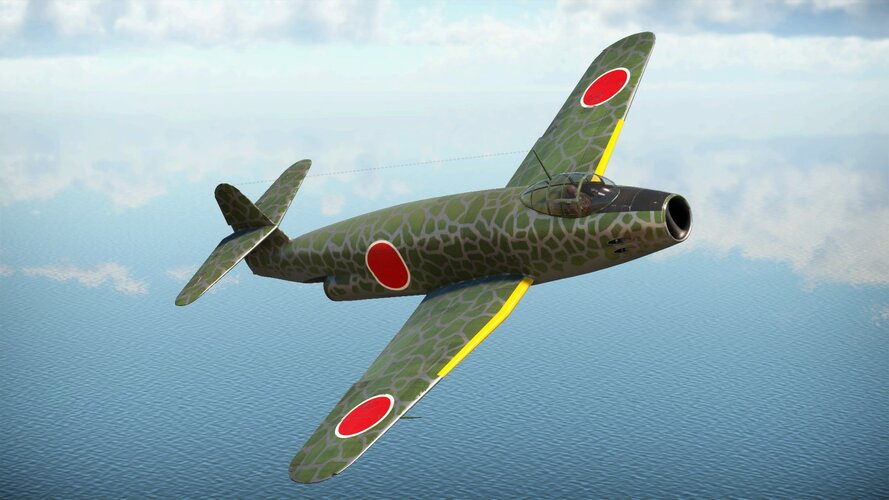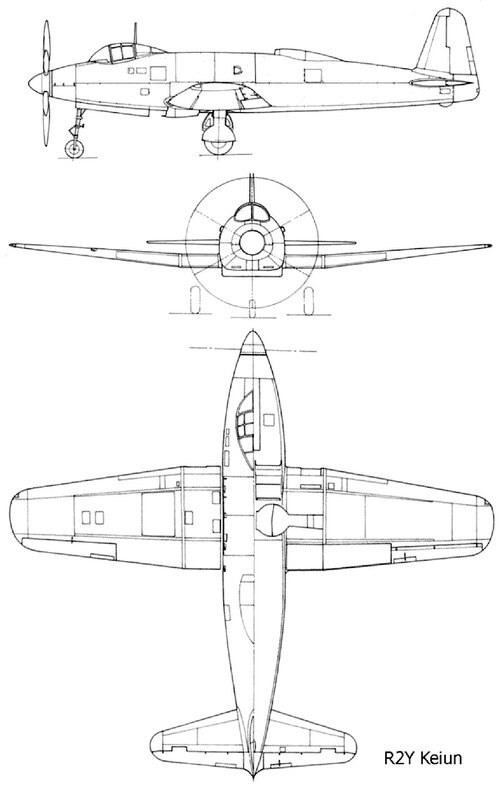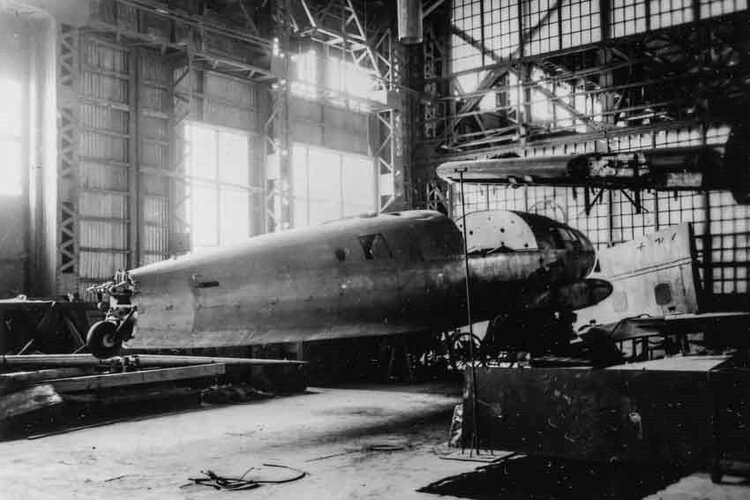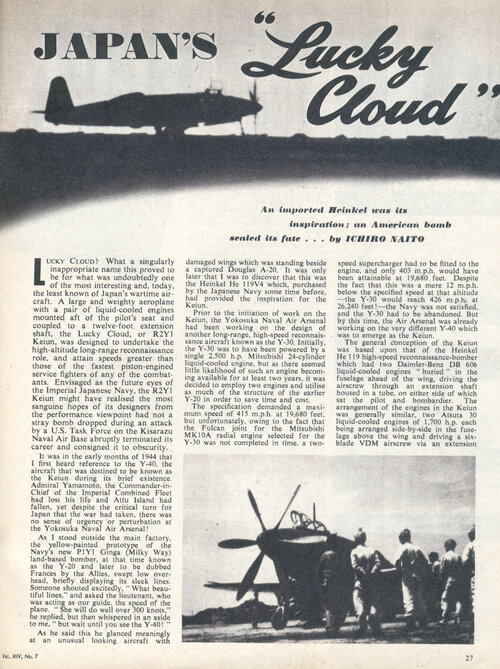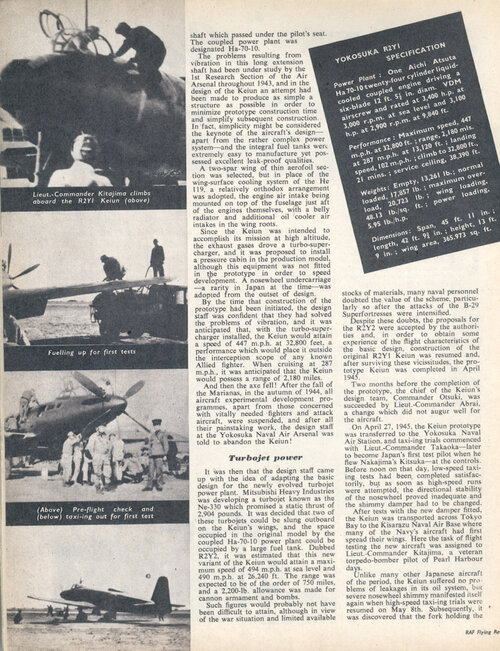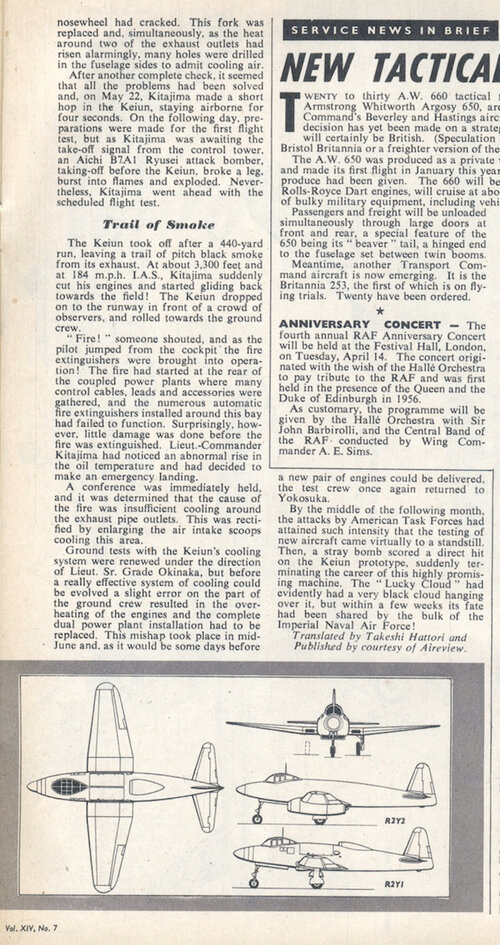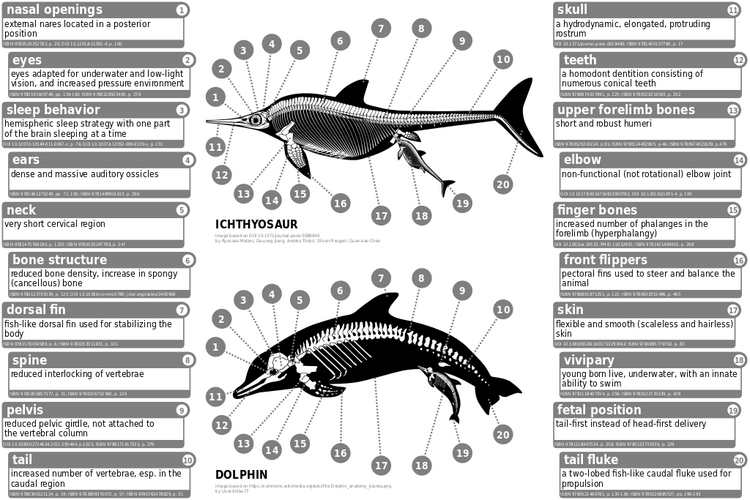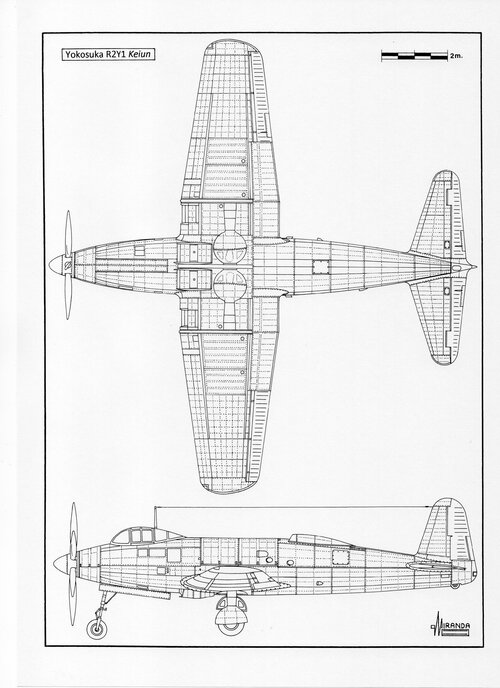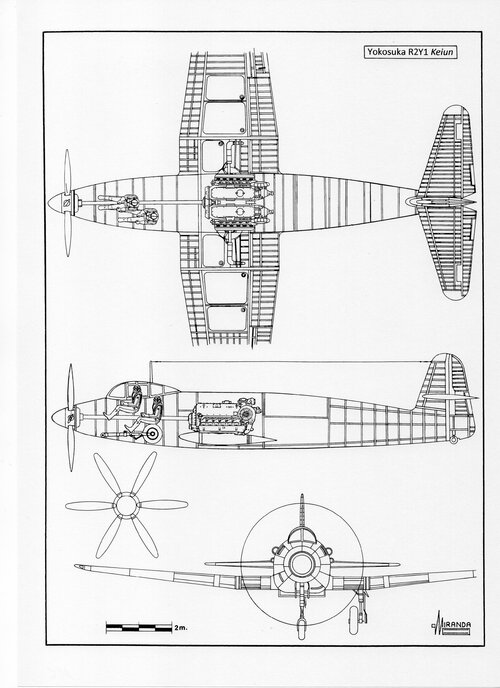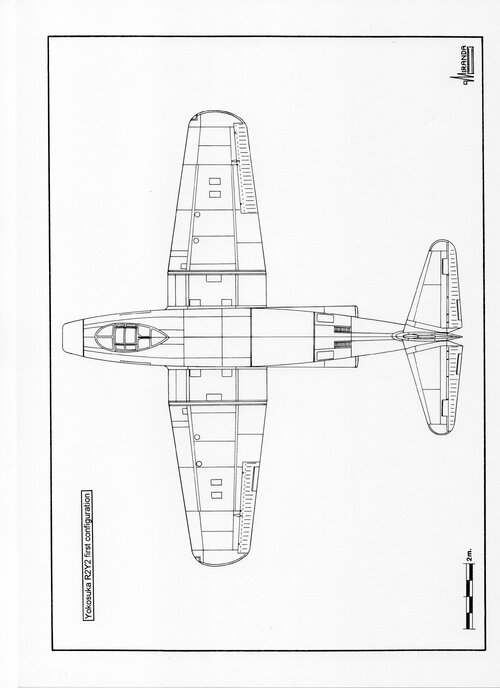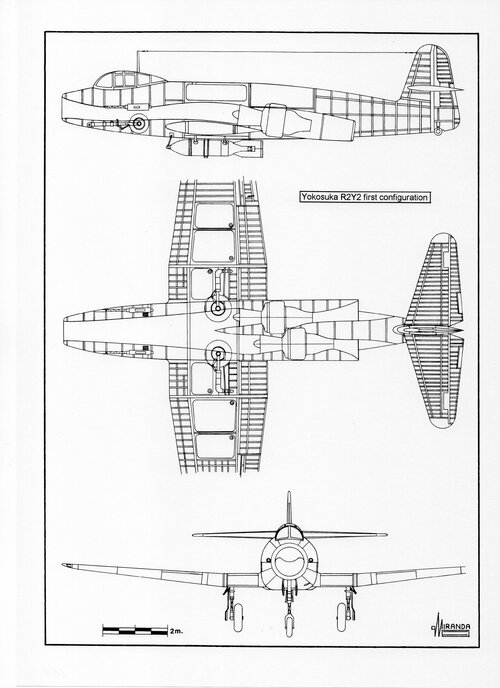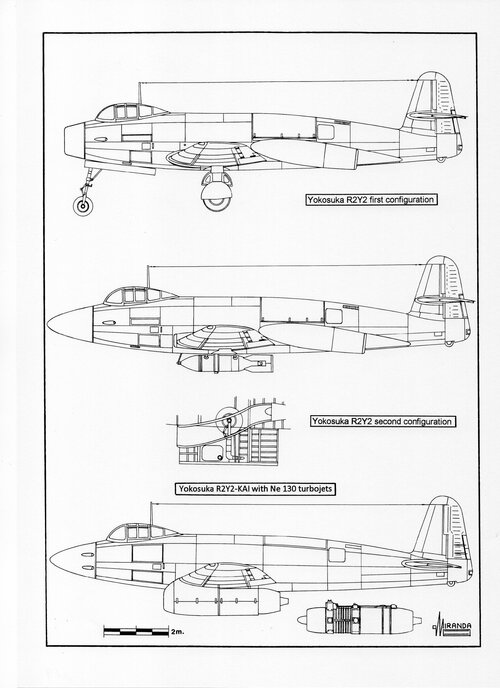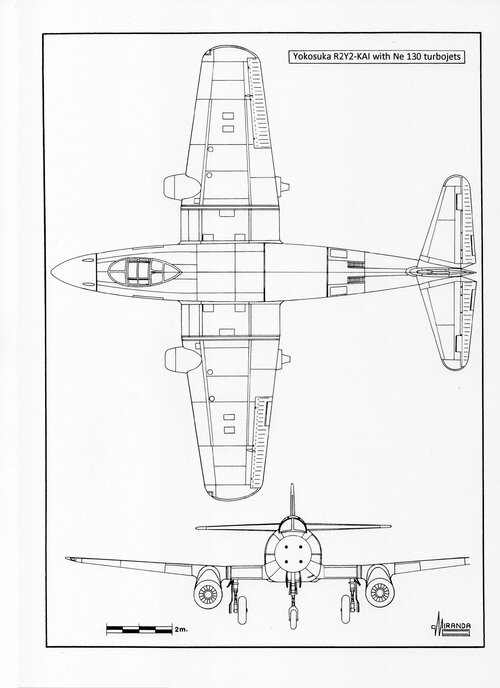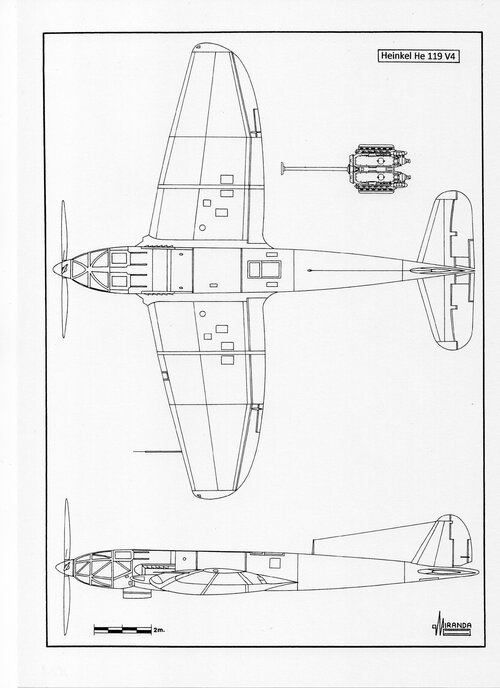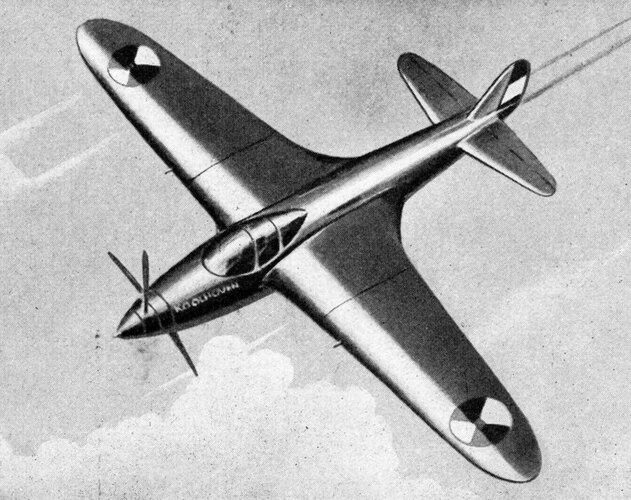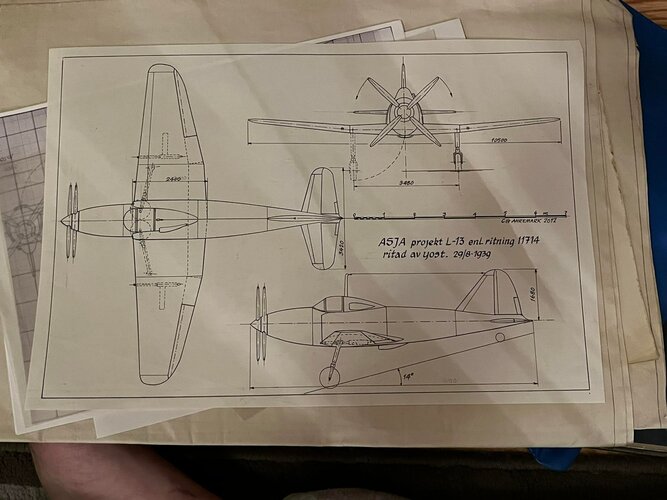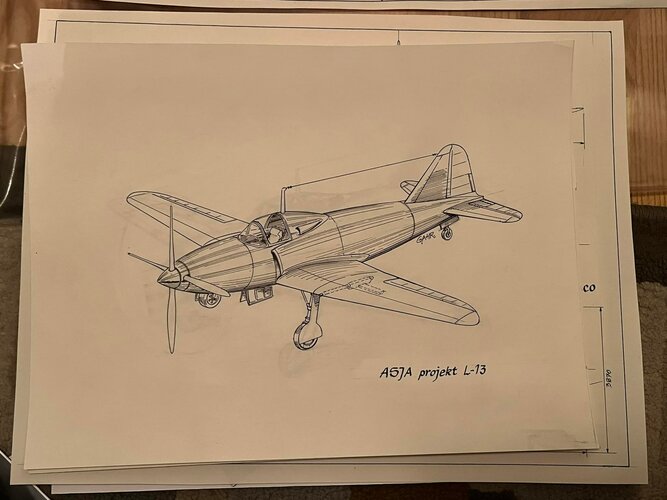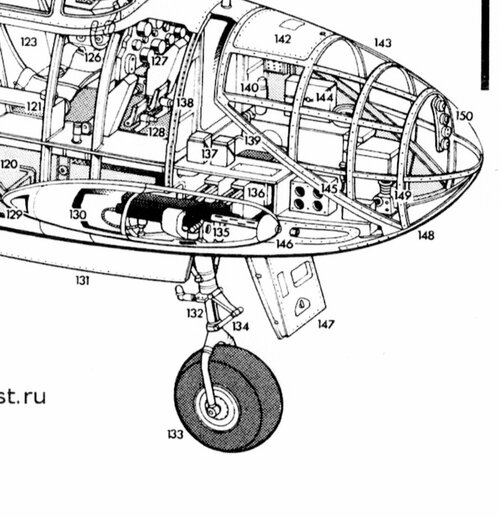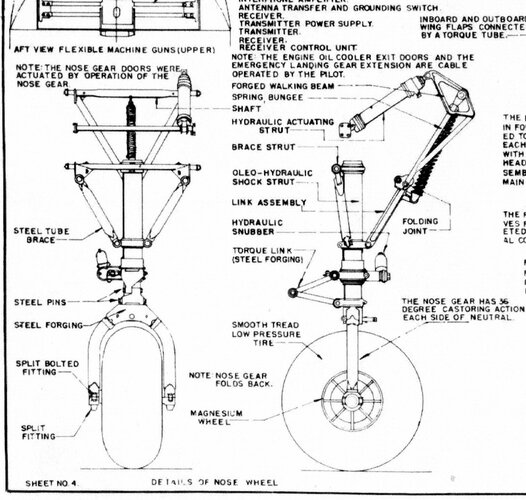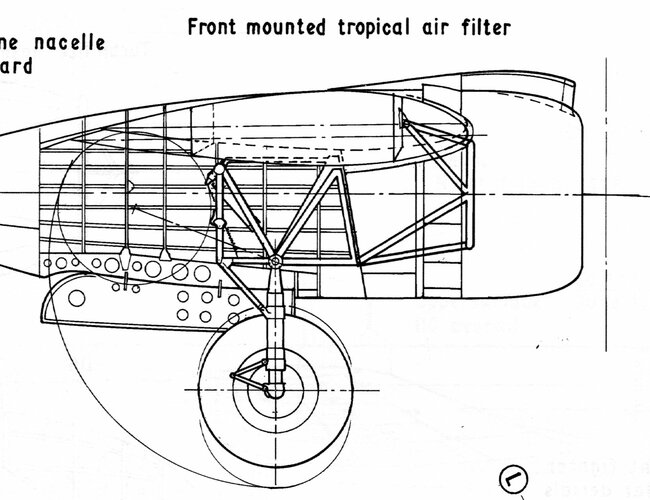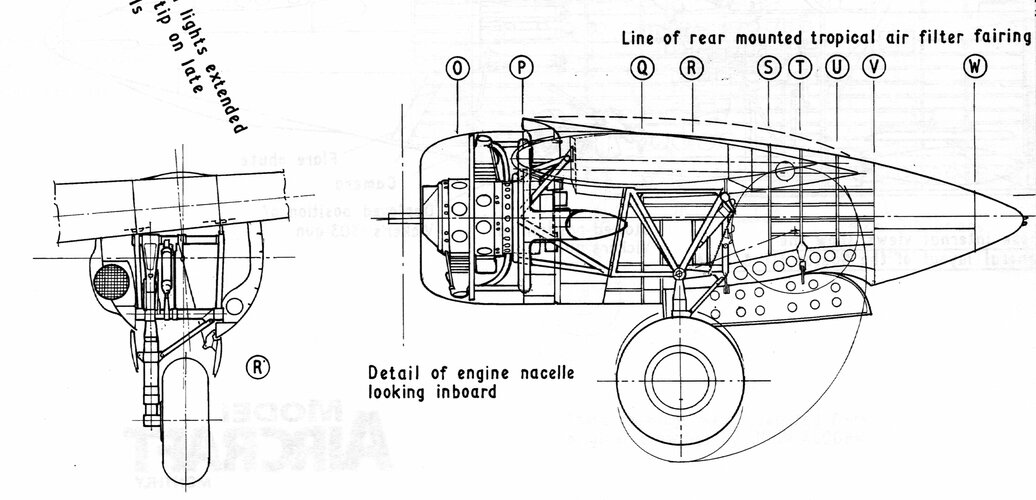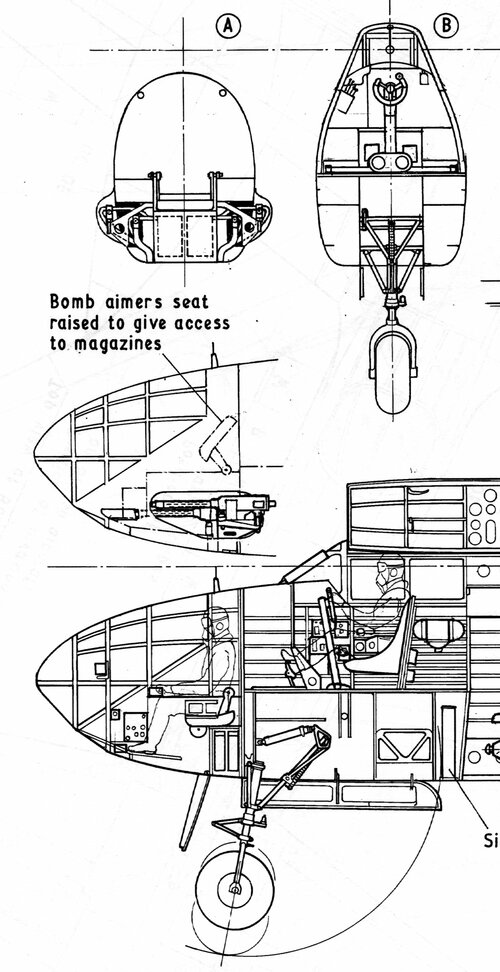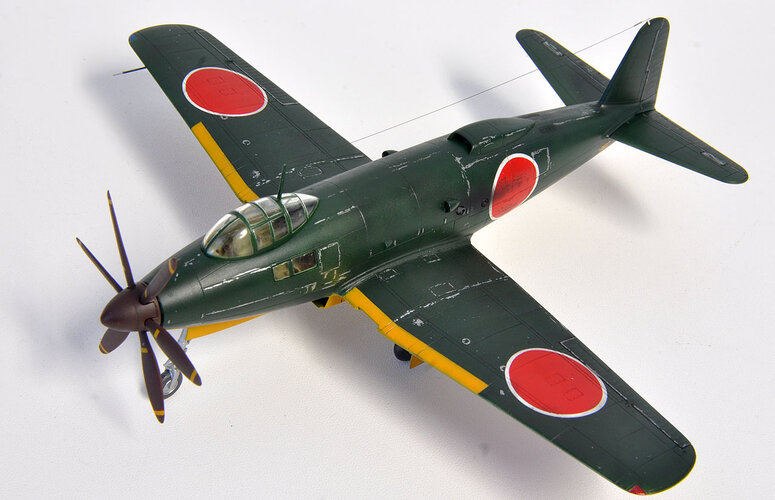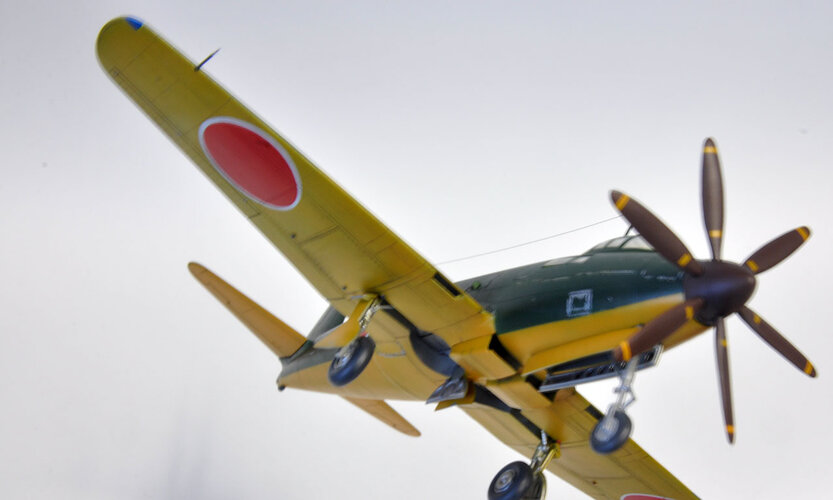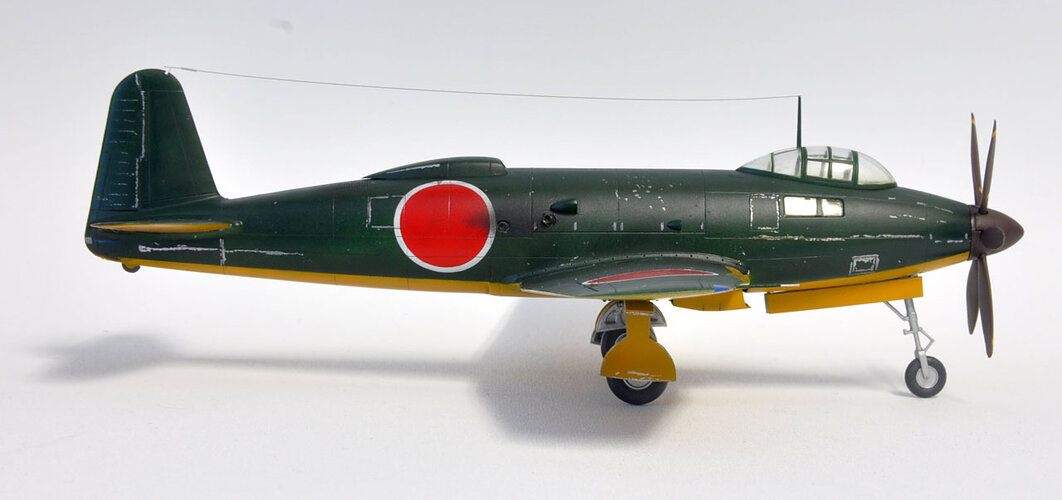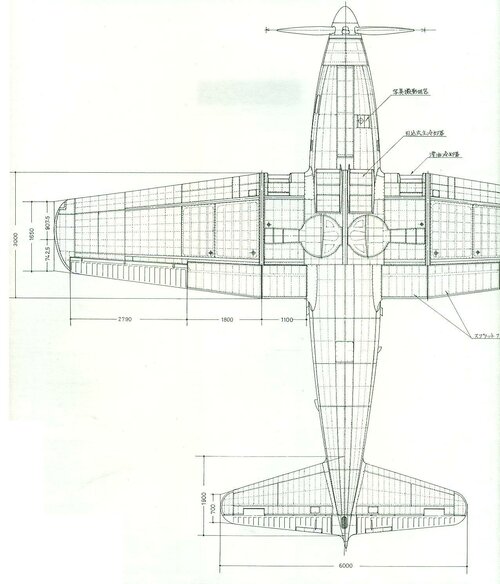You are using an out of date browser. It may not display this or other websites correctly.
You should upgrade or use an alternative browser.
You should upgrade or use an alternative browser.
Yokosuka (Kugisho) « Keiun » (R2Y1) and « Keiun-kai » (R2Y2)
- Thread starter elmayerle
- Start date
QAZ
Interested in Japanese jet development during WWII
Any jet engine except for 'Ne-330' is off topic from of Keiun Kai, so I made this thread to further discussion of other Japanese engines:
blackkite
Don't laugh, don't cry, don't even curse, but.....
- Joined
- 31 May 2007
- Messages
- 8,807
- Reaction score
- 7,674
Hi! Keiun-Kai.
Source : Japanese Aircraft Large Picture Book.
https://warthunder.com/en/news/3460--en
Source : Japanese Aircraft Large Picture Book.
https://warthunder.com/en/news/3460--en
Attachments
Last edited:
blackkite
Don't laugh, don't cry, don't even curse, but.....
- Joined
- 31 May 2007
- Messages
- 8,807
- Reaction score
- 7,674
Attachments
blackkite
Don't laugh, don't cry, don't even curse, but.....
- Joined
- 31 May 2007
- Messages
- 8,807
- Reaction score
- 7,674
blackkite
Don't laugh, don't cry, don't even curse, but.....
- Joined
- 31 May 2007
- Messages
- 8,807
- Reaction score
- 7,674
Attachments
Last edited:
No
Just convergent evolution I guess? I don't know where I read that honestly
blackkite
Don't laugh, don't cry, don't even curse, but.....
- Joined
- 31 May 2007
- Messages
- 8,807
- Reaction score
- 7,674
Hi!

 www.aviationofjapan.com
www.aviationofjapan.com

Yokosuka R2Y Keiun
Another 'lost and found' RAF Flying Review article in this occasional series, this time from the March 1959 (Vol.XIV No.7) issue and...
Attachments
Convergent evolutionJust convergent evolution I guess? I don't know where I read that honestly
Attachments
- Yokosuka R2Y Keiun
The extraordinary expansion of the Japanese empire during the winter of 1941-1942 changed the priorities of the IJN at every level. One of the most important was the localization of the fleet of the Allies in the vastness of the world oceans, from Alaska to the oriental coast of Africa.
After the bitter experiences with the Focke-Wulf Kondor during the Atlantic Battle, all task forces of some strategic importance included aircraft carriers. Their fighters quickly and efficiently removed from combat the huge and slow Kawanishi H6K flying boats that the IJN had been using in reconnaissance missions.
With the subsequent appearance of the new Corsairs, Thunderbolts and Mustangs in the theatre of operations, the Gekkos and Gingas could just escape by operating by night only. The technological gap between both sides turned out to be practically impossible to overcome.
The single engine Saiun was very fast but also had an insufficient range for most of the missions and occasionally had to be disassembled and carried by a submarine until the operations area. As a transitional solution, the IJN acquired some units of Ki.46 recce airplanes to the IJA.
The only other alternative left was to turn to the German technology and the designers of Yokosuka believed to have found the answer with the prototype of the Heinkel 119 V4, acquired in 1940. It was a Schnellbomber type propelled by two in-line engines positioned side by side within its fuselage. By 1942 the Germans had left aside the concept due to refrigeration problems, excessive vibrations and loss of power associated to the extreme length of power shaft. But the Japanese ignored that and started building the Y-40 – later known as R2Y1 – in the Naval Technical Arsenal of Yokosuka (Kugisho) during the summer of 1944.
During the tests of the propulsion system, using two Atsuta 30 engines in parallel position and a 4-meter-long extension shaft, same issues arose than those observed with the Heinkel. The project was put on hold during the building of the prototype until the end of 1944 when the features and technical data of the Ne-12 were published. The design team of Yokosuka proposed to the IJN the transformation of the R2Y1 in suicide bomber, under the name R2Y2, propelled by two Ne-30 turbojets with 850 kgf of static thrust, an engine that was a scaled-up version of the Ne-12 still under research. It was agreed that the prototype would be finished for flight tests until the production variant of the engine was available.
The first Japanese turbojets were centrifugal engines based on the German Heinkel HeS 8A of 1939. They burnt a great amount of fuel and could only increase its power by augmenting the diameter of its central section. In the case of the Ne-30, to reach the 850 kgf pledged by the manufacturer, it was required a diameter of 103 cm. But such a big size of the engines and their position in the under-wing nacelles would have generated too much drag. Therefore, the engines were finally, and with great difficulty, positioned within the fuselage airframe in a staggered position.
In its initial configuration, the R2Y2 had a solid nose replacing the propeller hub and two triangular air intakes in the wing roots. It was a rational solution that required minimal modifications of the R2Y1 fuselage. A problem though arose in the wings as the installation of the ‘S’ ducts interfered with the main spar, weakening its structure. To solve that, the air ducts had to be replaced by others in ‘Y’ positioned within the fuselage and a new air intake in the extreme nose. It was not however a good solution as the air ducts system interfered with the housing of the undercarriage nose leg, using much of the area assigned to the fuel tanks in the original project.
Besides, the results of the experiments made with air ducts of different lengths, connected to the turbojets of the Me 262 V1 W.Nr. 130015, were unknown in Japan in November 1944. The Messerschmitt technicians had determined that the turbulence and resonance phenomenon that the air experimented within the air duct alarmingly diminished the performance of the turbojets and recommended that the new designs of aircraft used short ducts.
At any rate, only one prototype of the Ne-30 was built for evaluation purposes. Its manufacturing was cancelled in favour of the new axial type turbojets Ne-130 and Ne-330 that were more efficient and could be positioned under the wing without generating too much drag. The possibility of having the advanced Ne-130 of 900 kgf static thrust in the medium term, led to the last modification of the project: a heavy interceptor armed with cannons (possibly four Type 5 of 30 mm or two Ho-301 of 37 mm in the nose) with two turbojets in the underwing nacelles. The final design, named R2Y2-KAI (R2Y2-G according to some authors) had an estimated maximum speed of 800 kph and a service ceiling of 10,500 m and would have been the answer to the B-29, would the length of the war adapted to the Japanese estimations.
Technical data
R2Y2 1st suicide variant solid nose, lateral air intakes, mid tailplane
Wingspan: 14 m, Length: 13.08 m, Engines: two Ne-30 turbojets with 850 Kgf peak thrust each, Armament: two Type 3 machine guns of 13 mm and one Number 80 Model 2 bombs of 807.5 kg
R2Y2 2nd suicide variant, nose air intake, mid tailplane.
Wingspan: 14 m, Length: 12.31 m, Engines: two Ne-30 turbojets with 850 Kgf peak thrust each, Armament: two Type 3 machine guns of 13 mm and one Number 80 Model 2 bomb of 807.5 kg
R2Y2-KAI interceptor low tailplane.
Wingspan: 14 m, Length: 13.8 m, Height: 4.24 m, Wing surface: 34 sq.m,
Weight empty: 5,700 kg, Weight loaded: 8,850 kg, Maximum speed: 800 kph, Service ceiling: 10,500 m, Range: 1,270 km, Engines: two Ne-130 turbojets with 900 Kgf peak thrust each, Armament: cannons in the nose.
Attachments
blockhaj
Swedish "want to be" aviation specialist
- Joined
- 9 February 2017
- Messages
- 397
- Reaction score
- 486
Tons of projects from the era exist using central mounted engine. I only recently (2 years ago) found out about the Saab L-13 with central engine (photos via Tobias Holmbom). There is also the infamous Koolhoven F.K.55 which look very much like the Me 509.Just convergent evolution I guess? I don't know where I read that honestly
Attachments
Last edited:
- Joined
- 6 November 2010
- Messages
- 5,243
- Reaction score
- 5,467
blockhaj
Swedish "want to be" aviation specialist
- Joined
- 9 February 2017
- Messages
- 397
- Reaction score
- 486
Sauce?- Yokosuka R2Y Keiun
The extraordinary expansion of the Japanese empire during the winter of 1941-1942... (snip)
HiKeiun was influenced by He 119 in terms of the power plant setup. The structure of the tricycle landing gear also referred to data from a captured DB-7.
Attachments
blackkite
Don't laugh, don't cry, don't even curse, but.....
- Joined
- 31 May 2007
- Messages
- 8,807
- Reaction score
- 7,674
Hi!
You can see radiators located under the wing and oil coolers located wing leading edge.
Matsuba san says that radiators are retractable?
引込式主冷却器 means retractable main radiator.
滑油冷却器 means oil cooler.
You can see radiators located under the wing and oil coolers located wing leading edge.
Matsuba san says that radiators are retractable?
引込式主冷却器 means retractable main radiator.
滑油冷却器 means oil cooler.
Attachments
Last edited:
blockhaj
Swedish "want to be" aviation specialist
- Joined
- 9 February 2017
- Messages
- 397
- Reaction score
- 486
Cool to knowHi!
You can see radiators located under the wing and oil coolers located wing leading edge.
Matsuba san says that radiators are retractable?
引込式主冷却器 means retractable main radiator.
滑油冷却器 means oil cooler.
blockhaj
Swedish "want to be" aviation specialist
- Joined
- 9 February 2017
- Messages
- 397
- Reaction score
- 486
QAZ
Interested in Japanese jet development during WWII
Does any period depictions of the nose armament installation exist for the R2Y2?
No contemporary drawing of R2Y2 has been produced in a publication. It is unknown if any exist. Further, armament was probably not yet fully considered by the end of the war. The most detailed description from someone involved in the project I have read is just "1 tonne was allocated for weapons". In the existing specifications, the armament was undecided and the plane was still just named 'R2Y2', while as an attack plane, it should become 'R2Y2-G' according to conventions. The design was not worked on quickly because the Ne-330 turbojet hit roadblocks and was likely to be canceled.
Basically, 'R2Y2' was a measure to save the work on the R2Y1, but was unlikely to be realized due to the engine development being delayed.
Last edited:
QAZ
Interested in Japanese jet development during WWII
Looking at the supplied blueprints above and different models on the internet, which of these tail designs is true or do we simply dont know? Different blueprints also show a slightly angled vertical stabilizer and asymmetrical wing length (methods of countering torque).
View attachment 713979
The correct tail orientation of R2Y1 is like the former. The latter drawing I think is a speculative based on a raised horizontal tailplane due to jet exhaust of R2Y2, as seen on Kikka etc.
And in one contemporary diagram of R2Y1 that I know of, the wings are the same length, and the vertical stabilizer appears non-angled. *However, the drawing is undated.
Last edited:
I sooooooo happy today that I have found the ORIGINAL R2Y's documents in the microfilm Reel 2170. This microfilm was stored in National Diet Library, Japan. This should probably the ONLY document for R2Y1 Keiun that is ORIGINAL. I will share this documents to all of us. You can use the following link to download it. https://57.gigafile.nu/0518-b2508a057c4d5178fbcc0a5d8580f20c6
This file contains the blueprint of R2Y's fuselage but without any stringers shown (thus the position of stringers would be forever unknown, sad).




This file contains the blueprint of R2Y's fuselage but without any stringers shown (thus the position of stringers would be forever unknown, sad).
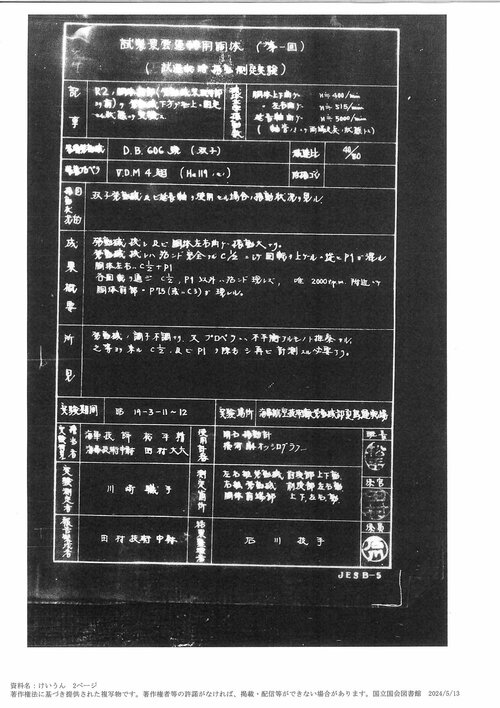
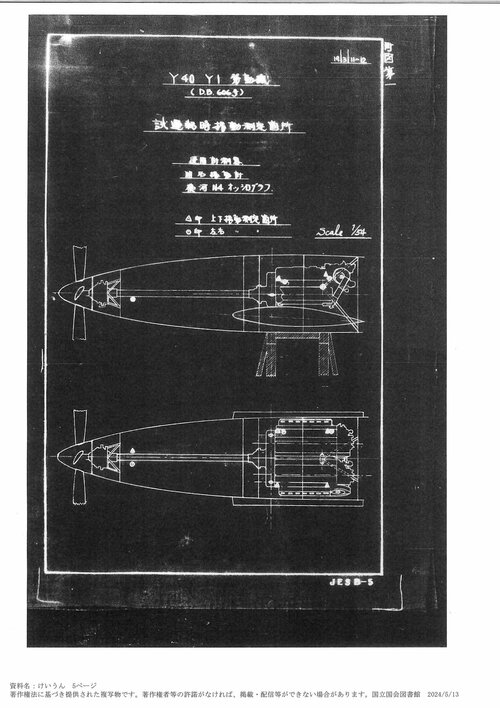
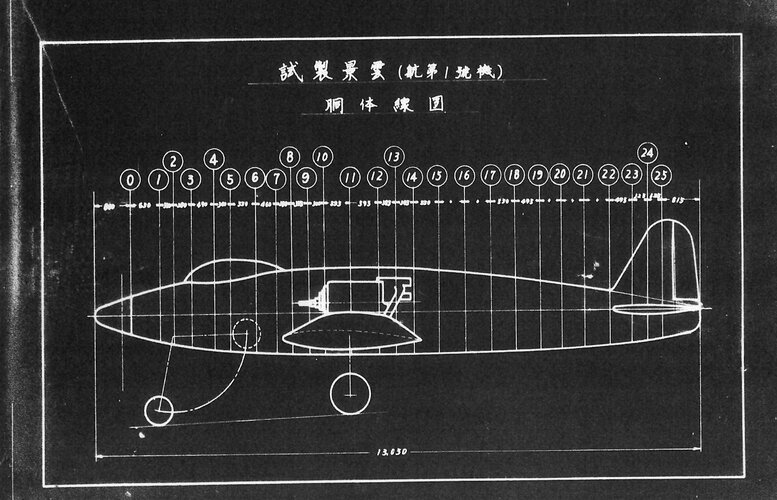
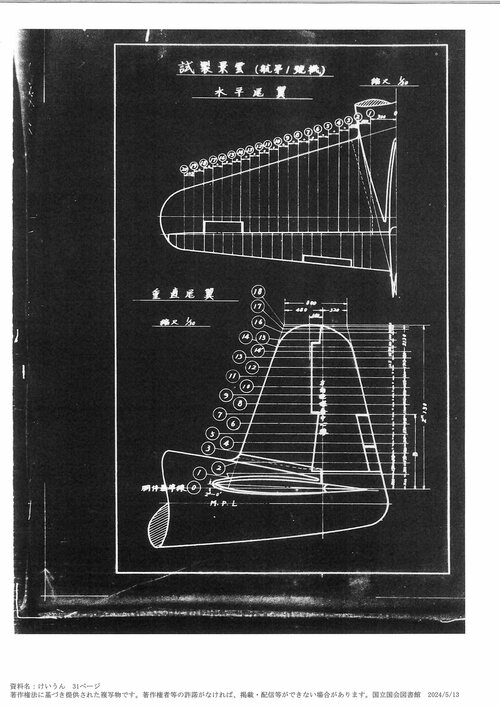
blockhaj
Swedish "want to be" aviation specialist
- Joined
- 9 February 2017
- Messages
- 397
- Reaction score
- 486
Amazing find!I sooooooo happy today that I have found the ORIGINAL R2Y's documents in the microfilm Reel 2170. This microfilm was stored in National Diet Library, Japan. This should probably the ONLY document for R2Y1 Keiun that is ORIGINAL. I will share this documents to all of us. You can use the following link to download it. https://57.gigafile.nu/0518-b2508a057c4d5178fbcc0a5d8580f20c6
This file contains the blueprint of R2Y's fuselage but without any stringers shown (thus the position of stringers would be forever unknown, sad).
View attachment 728679
View attachment 728680
View attachment 728681
View attachment 728682
One of the most crazy thing about modern books about Keiun is that there exist this picture from above.

The dotted lines I circled in red are the stringers. However as I said above the position of R2Y's stringers were LOST. So there must be someone who actually imagined these stringers as where it should be as other planes.
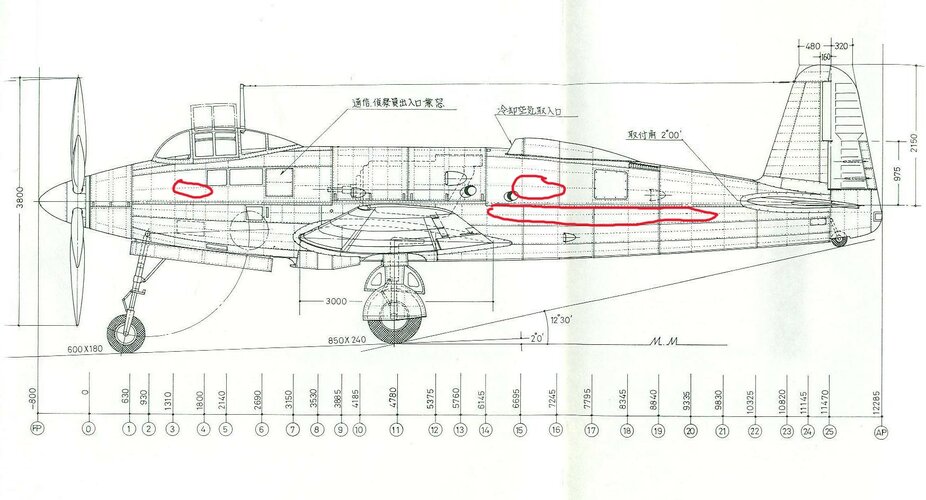
The dotted lines I circled in red are the stringers. However as I said above the position of R2Y's stringers were LOST. So there must be someone who actually imagined these stringers as where it should be as other planes.
Airborne2001
ACCESS: Secret
- Joined
- 19 June 2020
- Messages
- 224
- Reaction score
- 277
Well this is news to me. So the first two variants not only had the Ne-30s, but were specifically for the suicide role. More news is that the R2Y2-Kai was an interceptor. Did it not have any options for a suspended armament? I have seen mentions of bombs, and even a documentary that showed it with a torpedo (though those documentaries can be fishy sometimes).(Snip)
Technical data
R2Y2 1st suicide variant solid nose, lateral air intakes, mid tailplane
Wingspan: 14 m, Length: 13.08 m, Engines: two Ne-30 turbojets with 850 Kgf peak thrust each, Armament: two Type 3 machine guns of 13 mm and one Number 80 Model 2 bombs of 807.5 kg
R2Y2 2nd suicide variant, nose air intake, mid tailplane.
Wingspan: 14 m, Length: 12.31 m, Engines: two Ne-30 turbojets with 850 Kgf peak thrust each, Armament: two Type 3 machine guns of 13 mm and one Number 80 Model 2 bomb of 807.5 kg
R2Y2-KAI interceptor low tailplane.
Wingspan: 14 m, Length: 13.8 m, Height: 4.24 m, Wing surface: 34 sq.m,
Weight empty: 5,700 kg, Weight loaded: 8,850 kg, Maximum speed: 800 kph, Service ceiling: 10,500 m, Range: 1,270 km, Engines: two Ne-130 turbojets with 900 Kgf peak thrust each, Armament: cannons in the nose.
What an amazing find! Thank you for posting this!I sooooooo happy today that I have found the ORIGINAL R2Y's documents in the microfilm Reel 2170. This microfilm was stored in National Diet Library, Japan. This should probably the ONLY document for R2Y1 Keiun that is ORIGINAL. I will share this documents to all of us. You can use the following link to download it. https://57.gigafile.nu/0518-b2508a057c4d5178fbcc0a5d8580f20c6
This file contains the blueprint of R2Y's fuselage but without any stringers shown (thus the position of stringers would be forever unknown, sad).
View attachment 728679
View attachment 728680
View attachment 728681
View attachment 728682
Similar threads
-
Yokosuka (Yokosho/Yosho, Kugisho/Kusho) related topics on this forum
- Started by Stargazer
- Replies: 0
-
Yokosuka (Kugisho) high-speed long-range carrier-based dive bomber
- Started by blackkite
- Replies: 7
-
Yokosuka (Kugisho) MXY1 & MXY2 Experimental Test Planes
- Started by javierarg
- Replies: 10
-
-
Nipponki '46 - "Seiku" Air Defence Fighter.
- Started by Johnbr
- Replies: 6

